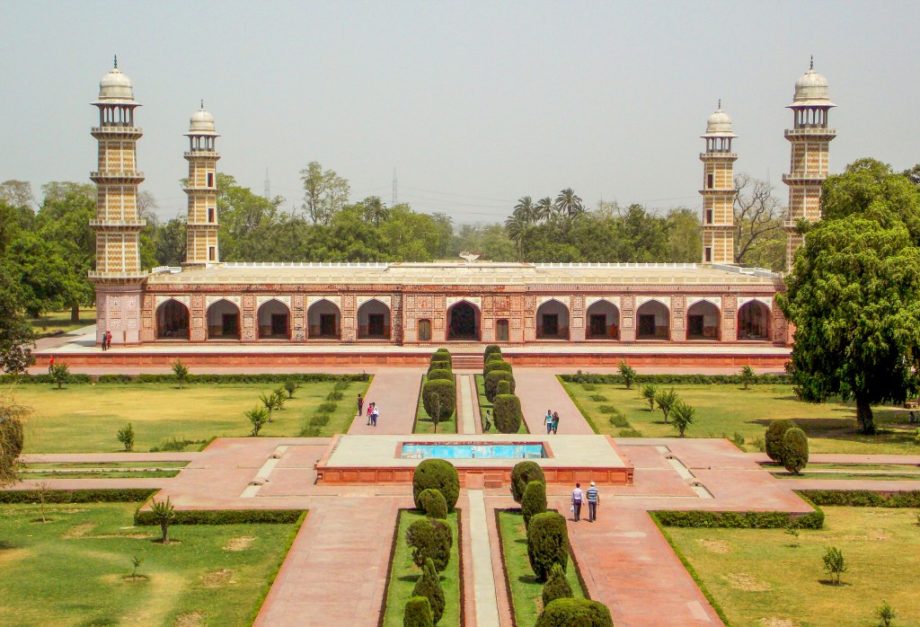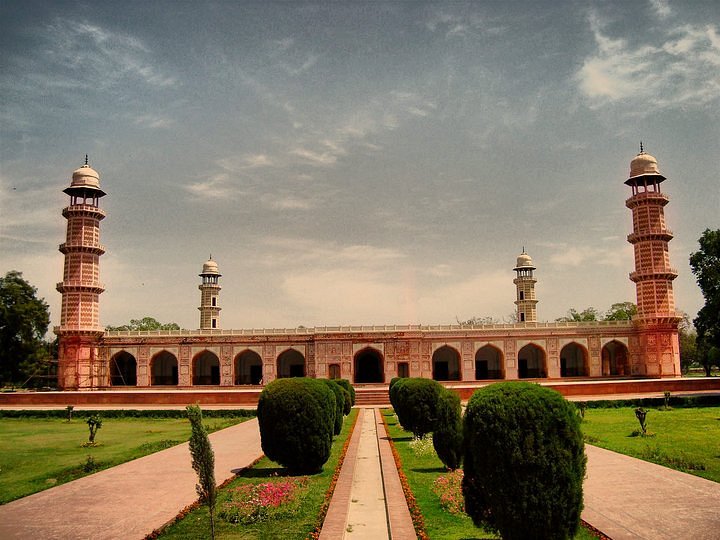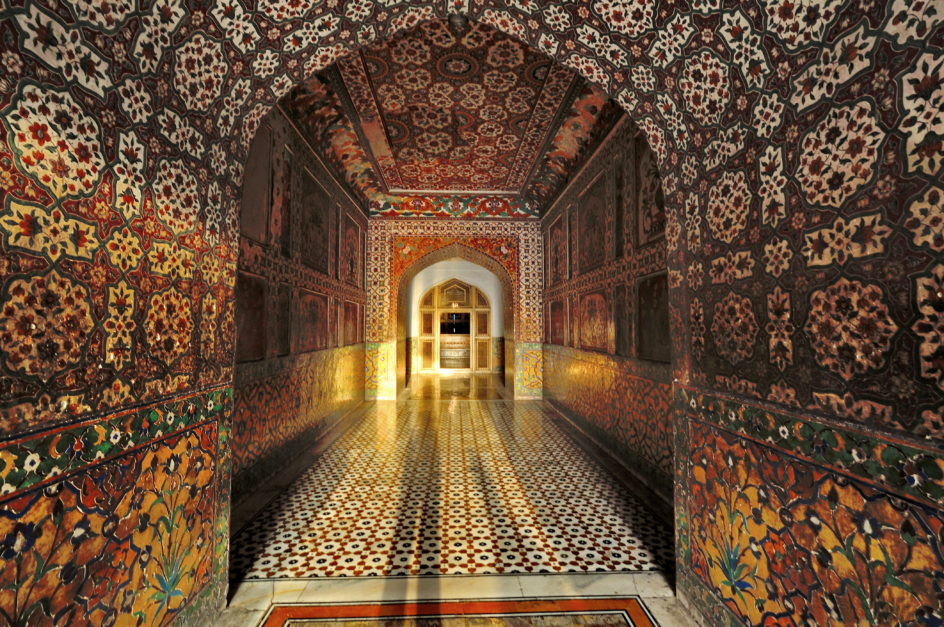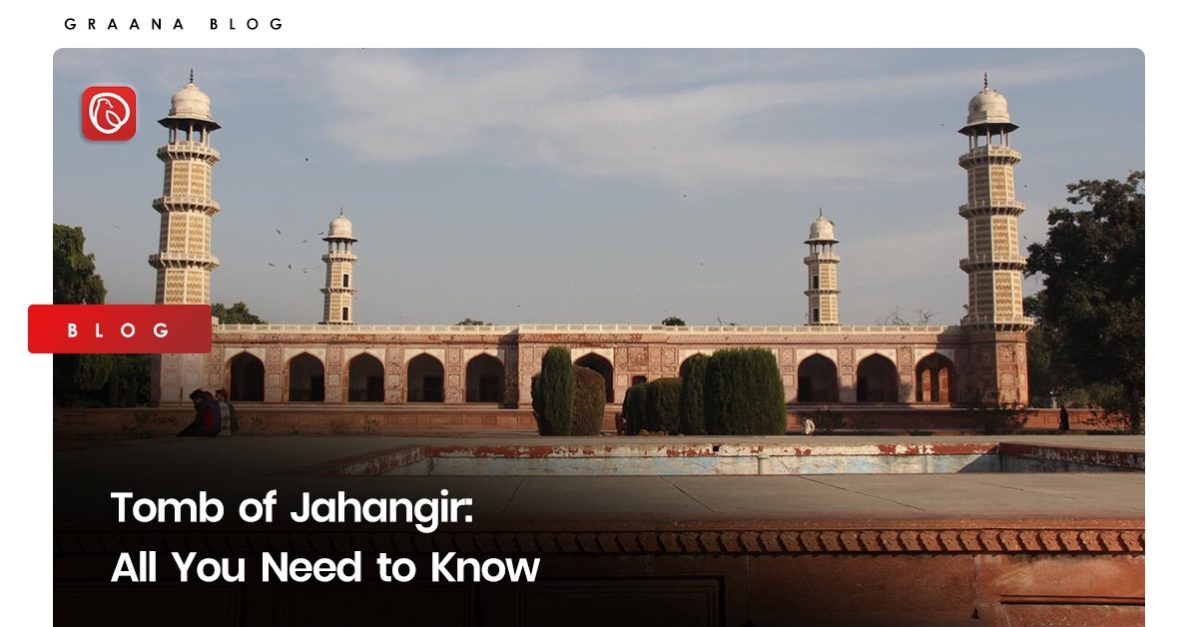The impressive architecture of the tomb of Mughal emperor Jahangir has made it a significant tourist attraction in Lahore. Graana.com brings you a detailed overview of tomb of Jahangir, architectural marvel.
Overview of the Tomb of Jahangir

In 1627, the Mughal emperor passed away while travelling across Kashmir. The Mughal empress Nur Jahan, Jahangir’s wife and one of the most powerful women in the Indian subcontinent’s history, ordered the construction of the tomb of Jahangir.
The selected location was a large garden called Shahdara Bagh, which had been Jahangir’s favourite retreat during his lifetime. A mosque and a sizable man-made lake were added to the garden to create a mausoleum compound.
After ten years, the tomb’s construction was finally finished in 1637.
It was built under the direction of Nur Jahan and featured calligraphy, intricate floral and geometric designs, and tile work. A portrait of Jahangir was also added to the tomb’s interior.
The tomb’s dome, which rises to a height of 30 metres (98 feet), was constructed of marble and red limestone. A garden that contains other tombs and monuments, including those of Nur Jahan and her brother Asif Khan, surrounds the mausoleum.
Over the ages, the tomb of Jahangir has undergone numerous renovations, including a significant restoration during the British colonial period in the early 20th century. The Department of Archaeology and Museums of the Pakistani government is responsible for the tomb’s maintenance. It is a major cultural landmark and a popular tourist destination in Lahore.
Location of the Tomb of Jahangir

Jahangir’s mausoleum is located in Shahdara Bagh, a garden compound outside of the city on the banks of the Ravi River. The tomb is about 10 kilometres (6.2 miles) away from the city centre, and is easily accessible.
How to Reach the Tomb of Jahangir
Here are a few ways to get to the tomb:
- By Car/Taxi: Travellers can hire a vehicle or taxi to take them to the tomb, and the journey from the city centre can take about 30 minutes. Visitors can also arrange transportation using Lahore-based ride-hailing services such as Uber or Careem.
- By Public Transportation: The Lahore Metro Bus System connects various areas through rapid transit buses. Visitors can take the metro bus to Shahdara station, which is close to the tomb.
- Once they arrive, visitors can buy tickets to enter the mausoleum complex and take a tour of the tomb and the surrounding gardens. Since this is a site of religious and cultural significance, it is advised to dress modestly and respectfully.
The Architecture of the Tomb of Jahangir

The tomb of Jahangir is a stunning illustration of the Mughal architectural style, which emerged in India in the 16th and 17th centuries.
The tomb’s architecture includes the following details:
- Red sandstone and marble: These materials were frequently used in that time period, and they give the tomb a striking look and increase its structural integrity.
- Dome: The mausoleum has a sizable dome that rises 30 metres above the ground. It is supported by four arches, which are adorned with calligraphy and elaborate carvings.
- Gardens: A large garden surrounds the mausoleum and contains several additional tombs and monuments. Built in the traditional Mughal manner, it also has terraces and water features.
- Intricate Calligraphy: A common element of Mughal architecture, calligraphy is used to decorate the tomb. It includes inscriptions honouring Jahangir and his family, as well as passages from the Quran and other texts.
The tomb is also decorated with exquisite tile work incorporating deft floral and geometric designs.
Restoration Work
Over the years, the tomb of Jahangir has undergone numerous renovations, the most significant of which have been listed below:
- Early Restorations: During the Mughal era, as well as the Sikh and British colonial periods, mainly the structure of the tomb and the surrounding gardens were regularly maintained.
- Aga Khan Trust for Culture Restoration Project: The Aga Khan Trust for Culture initiated a significant restoration project for the tomb of Jahangir in 2000. The project’s objectives included restoring the tomb’s decorative and architectural elements, as well as the infrastructure and the surrounding grounds. It took several years to complete the restoration work, which required extensive research, documentation, and conservation efforts.
- Maintenance: The tomb of Jahangir is subject to continuous maintenance by the Department of Archaeology and Museums. This entails routine maintenance, upkeep, and supervision of the tomb and the gardens, as well as actions to safeguard the area from both natural and man-made disasters.
The tomb is a stunning memorial to Jahangir and his legacy, and also serves as a demonstration of the craftsmanship of Mughal builders.
For more informative content, visit the Graana blog.




